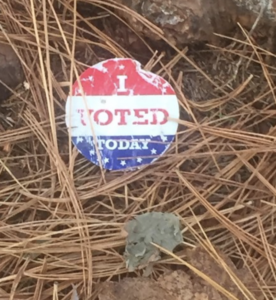by John Cratsley
A path just outside our home in Concord leads one into Gowing’s Swamp, historically known as Thoreau’s Bog. Thoreau referenced it in his “Journal,” “Walden,” and “Walking” for a total of 37 entries.
I particularly like the “Journal” entry of August 30, 1858, “Consider how remote and novel that [Gowing’s Swamp]. Beneath it is a quaking bed of sphagnum, and in it grow … plants which scarcely a citizen of Concord ever sees. It would be as novel to them as to stand there as in a conservatory, or in Greenland.”
I also find quite revealing the “Journal” entry of February 18, 1858, “[George Minott] Told me how Casey, who was a slave to a man – Whitney, — who lived where Hawthorne owns, — the same house, — before the Revolution, ran off one Sunday, was pursued by the neighbors, and hid himself in the river up to his neck till nightfall, just across from Great Meadows. He ran through Gowing’s Swamp and came back that night to a Mrs. Cogswell, who lives where Charles Davis lives, and got something to eat; then cleared far away, enlisted, and was freed as a soldier after the war.”
On November 3, Election Day 2020, I decided to walk to the polls through Gowing’s Swamp. I did this because I wanted to elect a President who would protect our precious natural resources. I did this because I thought if I walked in the footsteps of Henry David Thoreau, it just might help Joe Biden get elected and protect our environment. When I finished voting, I returned home through Gowing’s Swamp proudly wearing my “I Voted Today” sticker.
Several days later, when I next walked in Gowing’s Swamp, and looking down, I took this photo:
Could this be my sticker left in Gowing’s Swamp for HDT?
John Cratsley is a lecturer on law at Harvard Law School and a retired Massachusetts Superior Court Judge.

